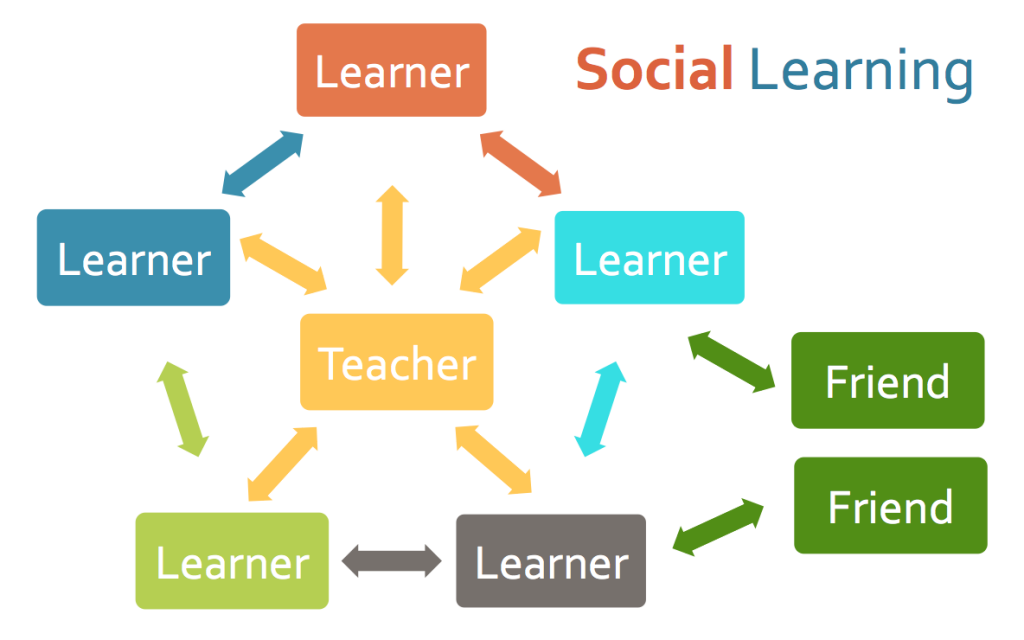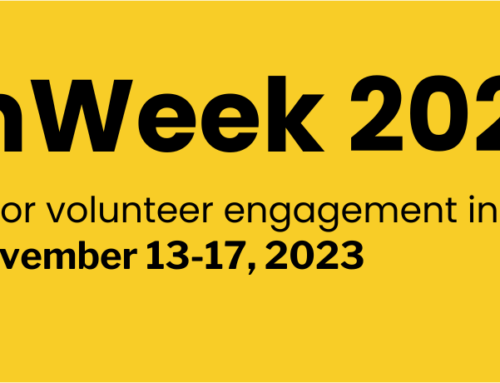How to Add Social Media to Your Online Volunteer Training
Wondering how to add more interaction to your online volunteer training? Why not add social learning to the mix?
Social learning is a powerful part of a blended learning strategy that combines training events and activities presented in-person and online. As online learning technology tools continue to become more user friendly and affordable, blended learning has gained traction with learning development professionals.
Social learning theory posits that human beings acquire new information and skills by observing others. Associated with psychologist Albert Bandura’s pioneering work in the 1960s, social learning theory explains how people learn new behaviors, values, and attitudes.
Now, with the advent of social media, the impact of social learning can be magnified exponentially.
Multi-directional Online Volunteer Training
When social media is used in combination with more traditional teaching, it allows for multilateral information sharing and feedback between instructors and learners in the following directions …
- One-to-Many – Teacher to Learner
- Many-to-One – Learner to Teacher
- Many-to-Many – Learner to Learner
Even colleagues & friends outside the formal learner group, can be sources of information.
Social Media and the Flipped Classroom
Social learning can be used effectively to extend learning beyond the traditional volunteer workshop or in-person classroom.
The flipped classroom principle is a model that works well with social media and can be a good starting point for training design. With flipped learning, learners first study the material by themselves before the formal event, rather than receiving knowledge or instruction during class time. Class time can then be put to better use with coaching, feedback, or skill-based exercises.
Everything that can be placed either before or after the in-class moment should be. Social media is a low-cost way to offer that pre- and post-training content in ways that can generate reflection, conversation, and engagement.
For example, consider the timing of these activities as part of an integrated online volunteer training strategy. How might you use the following to supplement and add some fun to your next volunteer orientation training?
- BEFORE FORMAL TRAINING EVENT
- Check the learner attitudes & motivation for training
- Crowdsource burning questions about volunteering
- Share the training agenda, logistics, etc.
- Broadcast a welcome message
- Share foundational information about the organization
- Set up a private discussion group for learners to communicate throughout the course
- DURING FORMAL TRAINING EVENT
- Live stream the training to volunteer who can’t attend in person
- Provide a central place to post training Q&A, comments, & reactions
- Brainstorm solutions together online for a break out activity
- Review real-world scenarios that are posted online
- Collect best practices from veteran volunteers to share
- Launch team challenges that result in a post
- Videotape and post learner takeaways from the training
- AFTER FORMAL TRAINING EVENT
- Provide follow up answers to questions from the in-person event
- Share photos of flip charts
- Curate links to online references & resources
- Administer quizzes & evaluations online
- Gather learner suggestions for the next round of training
 The bonus? Volunteers will already be looking at their phones during training. Now, you can redirect nervous fidgeting into somethings more productive AND fulfilling.
The bonus? Volunteers will already be looking at their phones during training. Now, you can redirect nervous fidgeting into somethings more productive AND fulfilling.
Also, consider how social media can facilitate peer-to-peer mentoring and connections between new and experienced volunteers. If you’re interested in how to enhance your volunteer training with peer-to-peer mentoring, see my previous post here.
As you can see, the only limit is your imagination. And, social media offers an easy and no-cost way to incorporate technology into the mix, making it a particularly attractive perk for younger volunteers who are accustomed to searching for, and finding, information quickly online.
Ready to Add Social Learning to Your Online Volunteer Training?
When adding a social media channel to your online volunteer training, take some time to consider what will work best and how you will integrate it into your current curriculum. Just because you build it, doesn’t mean volunteers will use it.
While a purposeful, well-considered plan won’t guarantee success, it will ensure you have a much better chance at wide adoption and high learner engagement.
Things to consider when creating a social media strategy to accompany your online volunteer training:
- What will be your learning objectives? What behavior change or new skill are you hoping to teach (or have volunteers teach one another)?
- To achieve those objectives, what learning activities need to happen in what order?
- Think about timing of discussions and presentations — What topics are best presented during a formal learning moment? What topics are best discussed before a formal learning moment? What topics are best discussed after a formal learning moment?
- For each activity, which social direction is most appropriate — One-to-Many, Many-to-One, or Many-to-Many?
- What is the most appropriate tool or platform for your volunteers? What do they already use and understand? What might they be willing to learn, given the proper support?
- How will you present the benefit of using social media tool(s) to the learners?
Test & Tweak Your Way To Success
Rather that making a wholesale switch to social learning across the board, pilot test it with a small group using a lean startup approach.
Use a build-measure-learn feedback loop that will help you make small adjustments, or iterations, until you get it right. This will help validate learning and reduce your your risk.






